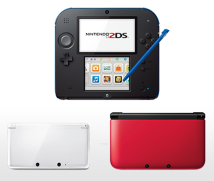2. ''I Don’t Know If We Can Make This!''
Ehara-san joined the design team and a presentation regarding the Nintendo 3DS system design was held in-house, but we didn’t reach a decision the first time. What did you think at that time, Miyatake-san?
I remember that first presentation very well. We thought up six proposals ranging from models similar to previous Nintendo DS systems to ones that were completely different in design, and two types of each, so we prepared a total of 12 models. We thought we had prepared a very comprehensive presentation, but in the end, all six proposals got rejected.
I think I said some rather cold things then. (laughs)
Yes. (laughs) I think you said that they didn’t feel at all like a new machine.
We’re past all that now, so we can laugh about it, but unfortunately at that first presentation, nothing felt like the next new thing. You had done what you could and presented your ideas with confidence, so it must have been hard when we shot them down. What did you think when we told you to redesign it?
I was sorely disappointed. Everyone on the team had thought up all kinds of ideas with a desire to nail it at the first presentation. We presented what we thought was our best work, but that wasn’t recognised. When we thought it over later, we figured, “Well, they might be a little old-fashioned.”
Well, rather than old-fashioned, I couldn’t see anything new in those first six proposals that were different from previous Nintendo DS models. I didn’t sense any new characteristics.
Yes.
So we decided to redo it so that it would look different at a glance, but the timing was already getting tight for those in mechanical design and manufacture.
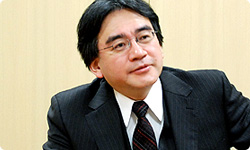
Yes, it was.
That placed quite a burden on mechanical designers like Koshiishi-san and Goto-san.
I think we had to wait about one month.
Yes, until one month after the first presentation. We made the mechanical designers wait until then.
Even from the other room I could feel the mechanical designers’ tension. What led to your breakthrough?
When we presented the six proposals, we heard lots of opinions and got a better idea of the direction we should take. We cut down the number of proposals for the second presentation.
There were fewer types the second time.
Yes. We put forth three that we thought were particularly great.
You whittled them down to three.
Yes. Three, with each one heading in a different new direction. We knew the schedule was getting tighter, so we provided a range of options by their feasibility, from one about which we could almost see its feasibility in terms of the production schedule and one for which no feasibility had been attested - with the other proposal falling between those two.
The second group of three showed a lot of progress over the first six and they were all attractive. In the end, we decided on the one that Ehara-san had been central in designing. Ehara-san, what was in your mind as you prepared this proposal?
Well...
You had joined the team thinking, “I’m going to make a break with past models!” but you weren’t in a position to say that anymore, right?
No, I thought I still hadn’t made enough of a break. (laughs)
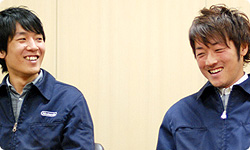
Really? (laughs)
To be honest about it, yeah.
So that was how you interpreted it when we said the proposals at the first presentation weren’t new enough?
Yes. I wanted to change it more. I thought about a completely new three-layer structure that you could see when you closed the system. Each layer would be a slightly different colour in a three-tone gradation.

Why was that?
The Nintendo 3DS system not only has StreetPass4, but also SpotPass.5 We wanted to represent through the design how all kinds of content would come in, not just when you went out walking around with it, but also when you just had it sitting at home. 4StreetPass: A communication system that allows users who walk around with their Nintendo 3DS system turned on to exchange game data with other Nintendo 3DS users that they pass on the street. 5SpotPass: A function in the Nintendo 3DS system that can connect to compatible public hotspots and through a wireless broadband Internet connection at home, even if the system is in Sleep Mode. Once connected, the Nintendo 3DS system will receive new content and updates on a regular basis.
You wanted it to visually express the accumulation of content.
There were also reasons of functionality for having three layers. We want players to open their Nintendo 3DS system very often, so in order to make it easy to open, we wanted to use a distinct reverse taper6 for the top layer.
6Taper: A slanted edge around a metal mould for making it easier to remove the moulded product, as well as the corresponding edge on the product.
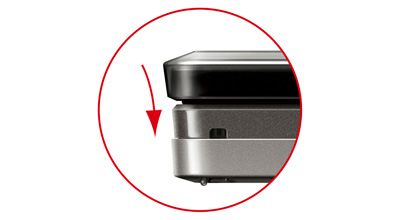
A reverse taper is like an upside-down trapezoidal cube.
Yes. By boldly using that shape for the top layer, without having to add in a niche for your finger, you could easily open the lid at any point along its edge. For the second layer, it was decided that we should put a sound volume slider and LED lights on the side, so in order to avoid accidentally hitting buttons when operating the system or carrying it around, we decided to concentrate them on that single layer and make the whole layer a bit of an indentation, which would make the top layer even easier to open.
So that’s why the second layer is tucked in a bit.
Right. Then for the bottom layer, I wondered if we could adopt something like the sign system at airports. I thought putting icons or lettering on the third level for the buttons and LED lights on the second level would be a good way to make everything clear to users.
But the top layer was a problem.
Yes. The first point of design was the top. We wanted to express the character of the Nintendo 3DS system, how data came in and the graphics have depth, through the three gradations of colour, texture and depth. The colour gradually darkened, the shine gradually increased, and a feeling of depth gradually came out. What’s more, we designed it to have a variety of expressions, so to speak, so that depending on the angle you view it from, the lines of the clear layer appear and disappear and you see things deep in. We thought we could give it an entirely different texture than previous Nintendo DS models. When we made the presentation, I started by saying, “I don’t know if we can make this, but...” I was suggesting something that required a disclaimer!
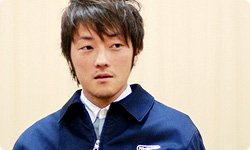
I remember asking at the second presentation how we could make that.
Yes. But that was what I wanted. I really wanted people to think, “How do they make this?” and “How does this work?”
And, of all things, we have chosen the one that we didn’t know how to make! (laughs)
Yeah. And given the time constraints, I bet the three guys to my left were thinking, “Oh no...” and breaking out in cold sweats! (laughs)
Not only did we settle on a design one month late, but we didn’t even know if it would be possible to make it!
Yes.
More thought on manufacturing them had been given to the other two proposals, but for your own proposal, you had purposely presented something that couldn’t be achieved without overcoming several new challenges.
I’m at the manufacturing facilities in China a lot, so I know the conditions at the manufacturing lines pretty well. When I look back at the manufacturing up until now, there were challenges every time, and I’ve experienced overcoming those challenges together with the people in the Product Evaluation & Engineering Department who bear the burden of somehow launching the mass production. Having a mountain of difficult tasks ahead is only normal, so I thought that the other people including Akai-san who was still with the Product Evaluation & Engineering Department then would handle it just fine somehow, and I didn’t give it that much thought.
Akai-san, when you were still in the Product Engineering Department and first saw the model, what was your impression?
I said it was impossible.
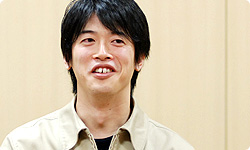
(laughs)
I said that before anything else!
